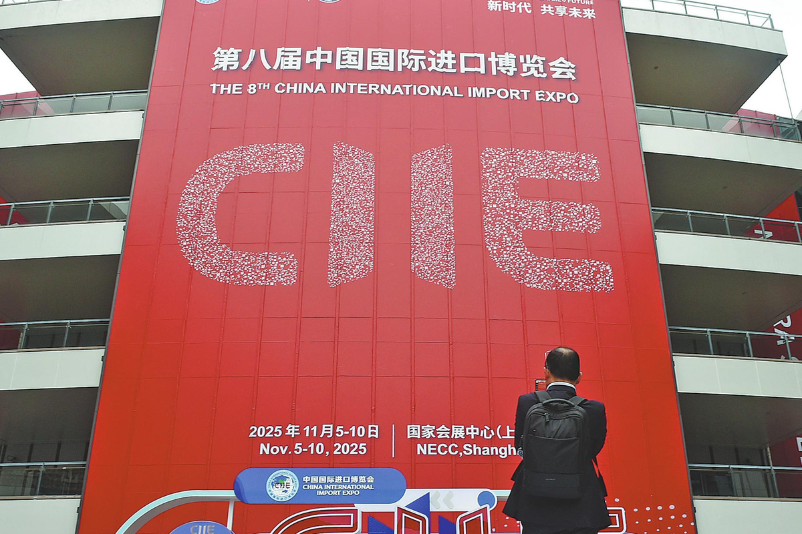Happy returns for companies that stay or go

Chinese firms can offset reshoring effects by focusing on high-end manufacturing
Recession in the US and the eurozone economies after the 2008 financial crisis has prompted many enterprises to shift manufacturing back to their home countries, especially from destinations like China.
Though most of these moves have political backing, there is growing concern that reshoring will be a new trend in the global industry supply chain.
Most of the manufacturing that has returned to the US and Europe from China, involves high-end electronic products and environmental protection industries. Consultancy firm Boston Consulting Group indicated in a 2012 report that seven Chinese sectors - furniture, automobiles, computers, electronic products, electrical equipment and appliances, plastics and rubber products, machinery and metal products - are likely to be the most affected by reshoring to the US.
Rising labor, raw material and transportation costs in destinations like China will negate the advantages and prompt these companies to return to the US in about four years, the report said.
Though some manufacturing companies in the US and Europe have already made the move, and others such as Caterpillar, General Electric, Alcatel and some German furniture companies are mulling over the plan, large-scale reshoring is unlikely from China.
There are not that many Western manufacturing companies in China, and most are specialized product manufacturers reliant on the US market. To adapt to the changing global realities, some Western manufacturing companies have already started to balance market risks by focusing on high-tech sectors.
Such an approach, they feel, will help keep core technologies at home, while the labor-intensive, low-tech, high-energy product processing and manufacturing will remain in China and other lower-cost countries.
In the 1980s, the US had 18.7 million manufacturing workers. But in October last year, for the newly added 200,000 manufacturing jobs in the US, there were only 19,000 new manufacturing workers. There is also no direct evidence that reshoring is creating the new jobs.
From 2000 to 2012, the US lost 6.9 million manufacturing jobs, showing the manufacturing sector is still in a trough. This year's short-term profit is not from structural recovery, but just a cyclical rebound in economic recession.
Although China's labor costs are rising, it is still more advantageous than those in Western countries. Available information proves that US and European companies will continue to expand investment in China, because China has a complete industrial chain and supply system, integral elements in the manufacturing system.
The Chinese market has always found favor with a majority of the international buyers. A survey of overseas buyers by the China International Chamber of Commerce in September indicated that 85 percent of foreign buyers plan to increase or maintain their procurement volume in China in 2013. More than 55 percent of the respondents expressed their desire to increase purchases in China over the next 12 months, while 75 percent pointed out that more than half of their procurement expenditures will be used to purchase products made in China.
In 2012, only 11 foreign-funded businesses from Zhejiang terminated their operations in China, while seven firms sought capital reduction. The size and scale of these enterprises, however, remains small.
Big companies, such as General Motors, Apple, Citroen, Air Liquide Group, Volkswagen and Siemens, say they are prepared to boost investment and production in China. They have indicated that they are not withdrawing from the Chinese market, and are more in a state of transition.
Though some companies have withdrawn from the Chinese market, they are just transferring the labor-intensive and energy-intensive industries to cheaper countries and regions. More higher-value products and services are moving to China, which is consistent with Chinese government's future plan.
In contrast, China's continuing efforts to get rid of low-end manufacturing has proven effective. In general, the purchasing power of the Chinese market and supporting industries still has enormous appeal to overseas manufacturing.
Of course, as a manufacturing powerhouse, China is no longer a simple low-cost production and processing base. Chinese companies should focus more on improving product quality, innovation and design, especially on how to increase financial and technical strength.
Reshoring is worthy of the attention of the Chinese government and enterprises as it will help them make the necessary changes in a timely manner. Unlike the rigid Chinese employment system, US and European trade unions have become more flexible after the economic crisis. Simplified work regulations have led to a fall in labor costs in EU nations such as the UK, Italy and Portugal. Some US state governments are also providing more subsidies to enterprises. All of these have led to higher labor productivity in the US and Europe.
However, such efforts have also helped Chinese manufacturing sector attract higher-end companies from the US and Europe. Improving product design capability and high-end manufacturing technology level is the most effective weapon to resist reshoring.
The author is a post-doctoral fellow at the School of Economics, Renmin University of China. The views do not necessarily reflect those of China Daily.
(China Daily Africa Weekly 01/03/2014 page11)
Today's Top News
- China to maintain pressure on Japan over PM's Taiwan comments
- Free trade zones incubators for nationwide policies
- US scholar: China's 15th Five-Year Plan charts path to future
- Coding the law for smart governance
- China ready to take tougher steps over Takaichi remarks
- Mobile judicial teams ensure justice for all






























